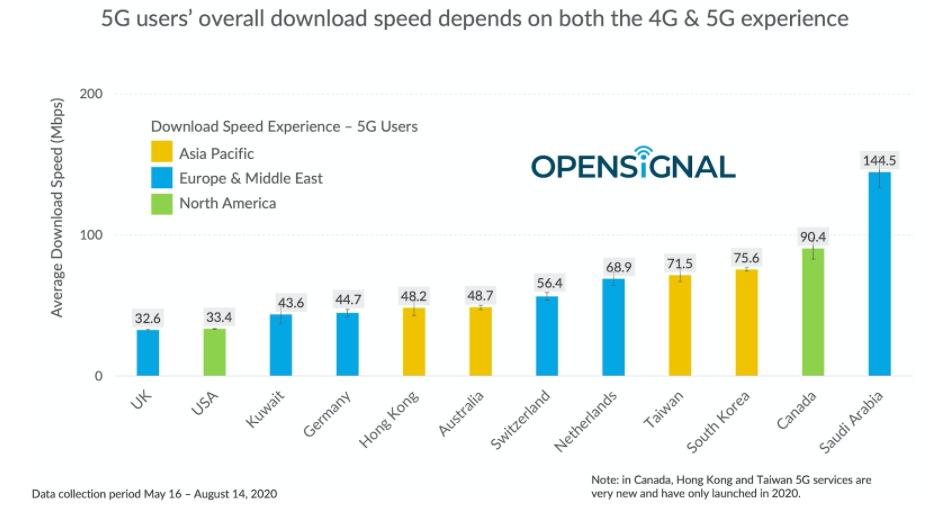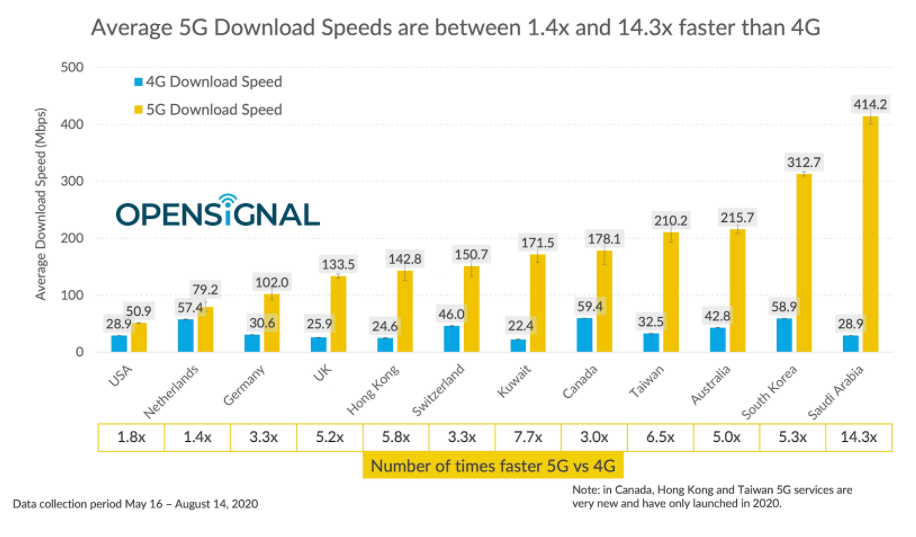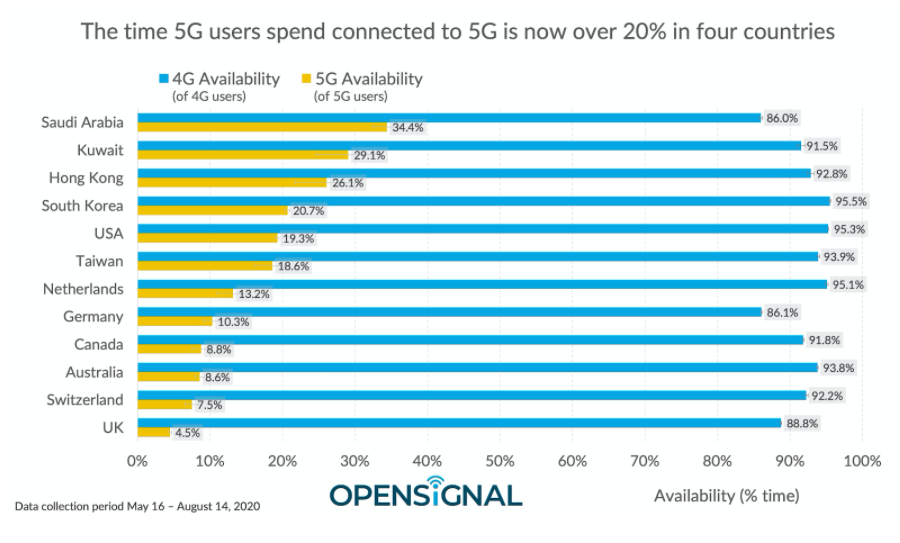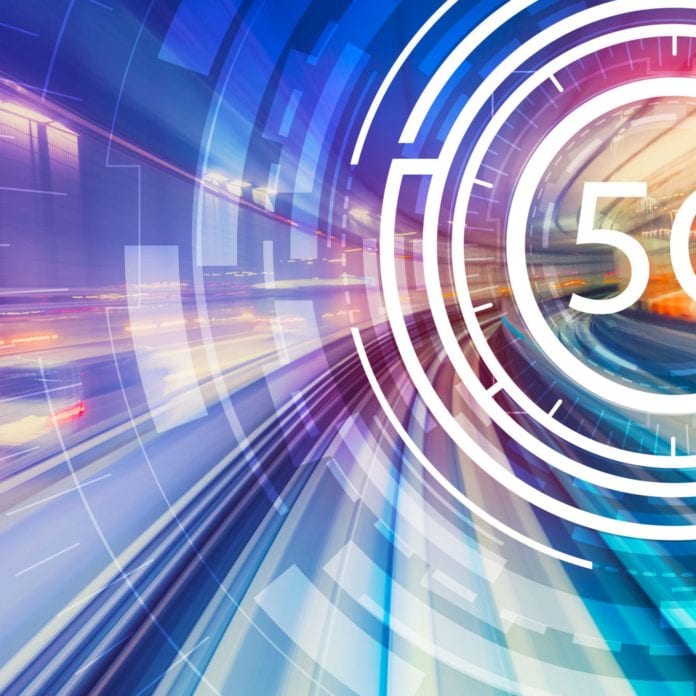Users in four countries are connected to 5G more than 20% of the time
A recent report released by Opensignal examined the “real-world 5G experience” across mobile operators from 12 different countries. One of the more interesting results of the study revealed that the U.S. received one of the lowest average download speed of 50.9 Mbps, which, while certainly faster than its 4G speeds, is not very impressive when compared to the 200 Mbps to 400 Mbps range achieved by some of the other countries on the list.
Specifically, when it came to the average download speed, including 3G, 4G and 5G services, Saudi Arabian users experience the fastest overall speed, with the country achieving a Download Speed Experience of 144.5 Mbps, according to Opensignal. Canada came in second with 90.4 Mbps. Both beat out South Korea — which ranked third — despite the fact that the country has the highest adoption rate of next-gen services.
On the other end of the scoring spectrum, U.K. users have the slowest overall Download Speed Experience with a score of 32.6 Mbps. Opensingal said that this poor score is due to the country’s underperforming 4G experience, which significantly dragged down the overall score.
 However, Opensignal got somewhat different results when looking at average speed using only 5G technology. Saudi Arabia remains in first place, but South Korea jumps to second place with average 5G Download speeds of an astonishing 312.7 Mbps, which is more than five times faster than its 4G speeds.
However, Opensignal got somewhat different results when looking at average speed using only 5G technology. Saudi Arabia remains in first place, but South Korea jumps to second place with average 5G Download speeds of an astonishing 312.7 Mbps, which is more than five times faster than its 4G speeds.
The U.K. also faired better in this category, moving up in the rankings to 9th place, while the U.S., Netherlands and Germany now make up the last three positions, as can be seen in the chart below.
 “The modest 5G Download Speeds in the U.S. are due to a combination of the limited amount of new mid-band 5G spectrum that is available and the popularity of low-band spectrum — T-Mobile’s 600MHz and AT&T’s 850MHz — which offer excellent availability and reach, but lower average speeds than the 3.5GHz mid-band spectrum used as the main 5G band in every country outside of the U.S.,” Opensignal’s Analysis Team Lead Ian Fogg wrote in explanation.
“The modest 5G Download Speeds in the U.S. are due to a combination of the limited amount of new mid-band 5G spectrum that is available and the popularity of low-band spectrum — T-Mobile’s 600MHz and AT&T’s 850MHz — which offer excellent availability and reach, but lower average speeds than the 3.5GHz mid-band spectrum used as the main 5G band in every country outside of the U.S.,” Opensignal’s Analysis Team Lead Ian Fogg wrote in explanation.
He went on to reference another Opensignal report that looked just at U.S. operators, which showed that Verizon’s mmWave-based 5G service “offers very considerably faster average 5G Download Speeds of 494. 7 Mbps […] which is faster than the average 5G download speeds Opensignal has seen on any operator, or in any country to date including Saudi Arabia.”
It’s important to note, however, that because Verizon’s mmWave network may be fast, it is small, and the high frequencies are tricky. The result is the operator’s high fifth-generation download speeds did very little to bring up the U.S.’s overall performance across all carriers.
In fact, in that same report, Opensignal indicated that users were able to get a Verizon 5G signal just 0.4% of the time, compared to 22.5% for T-Mobile, 14.1% for Sprint, and 10.3% for AT&T.

While the U.S. may be struggling a bit in the speed department, it ranks much higher on 5G Availability than on average download speed because low-band spectrum is ideally suited to enable great reach and allow users to spend more time connected than in countries with higher frequency spectrum.
In general, 5G availability is improving across the globe with four countries managing to provide 5G connectivity to users more than 20% of the time.


